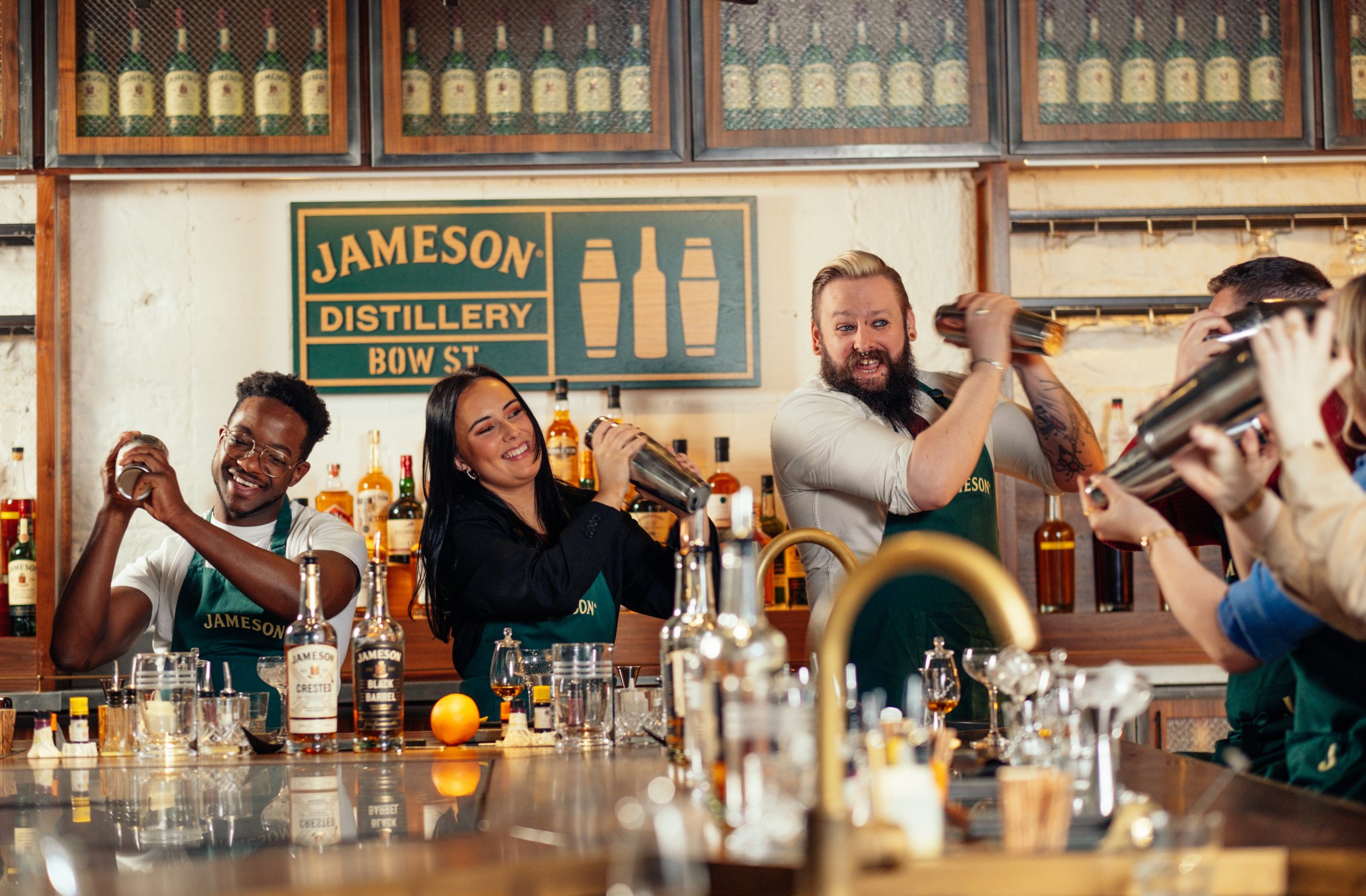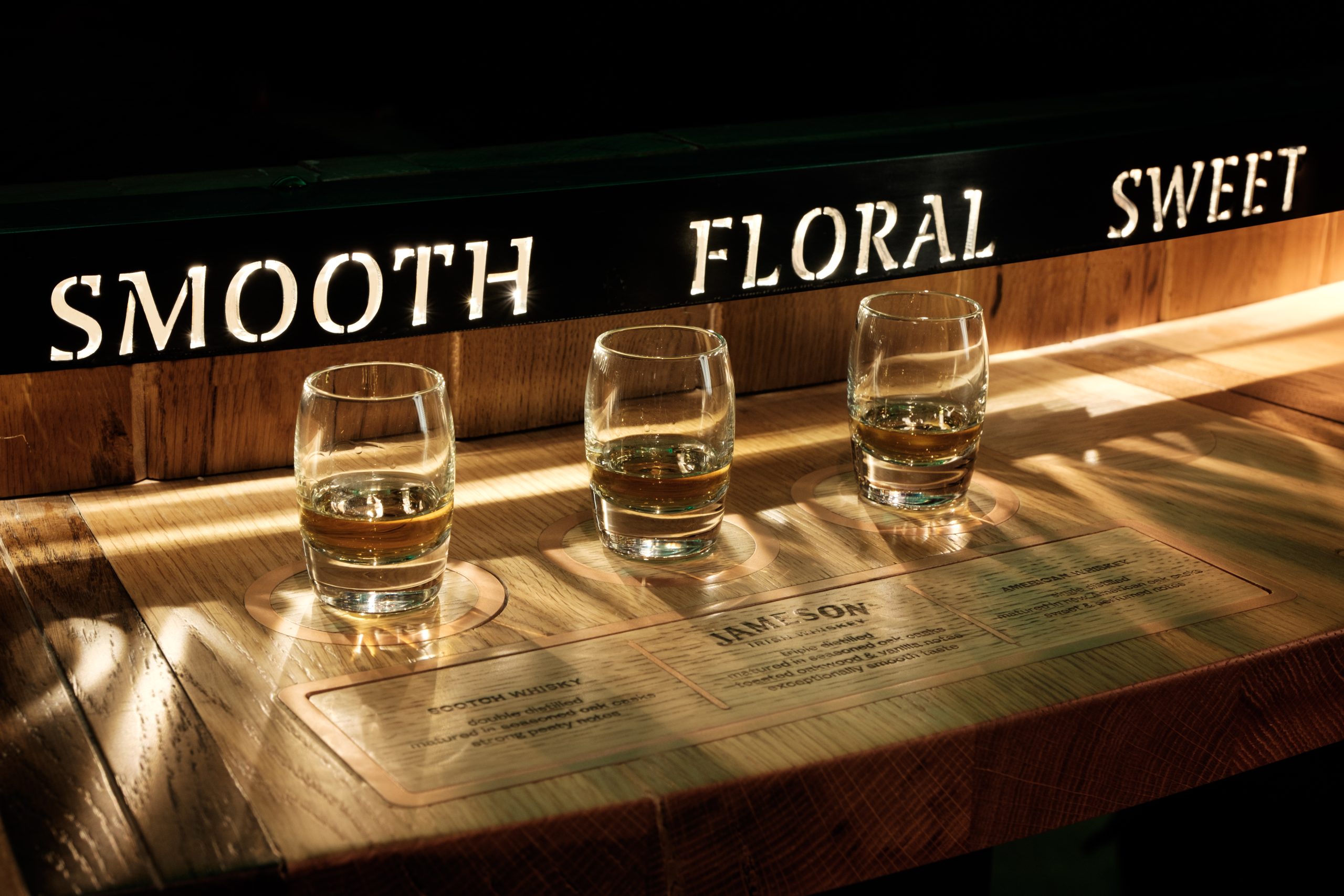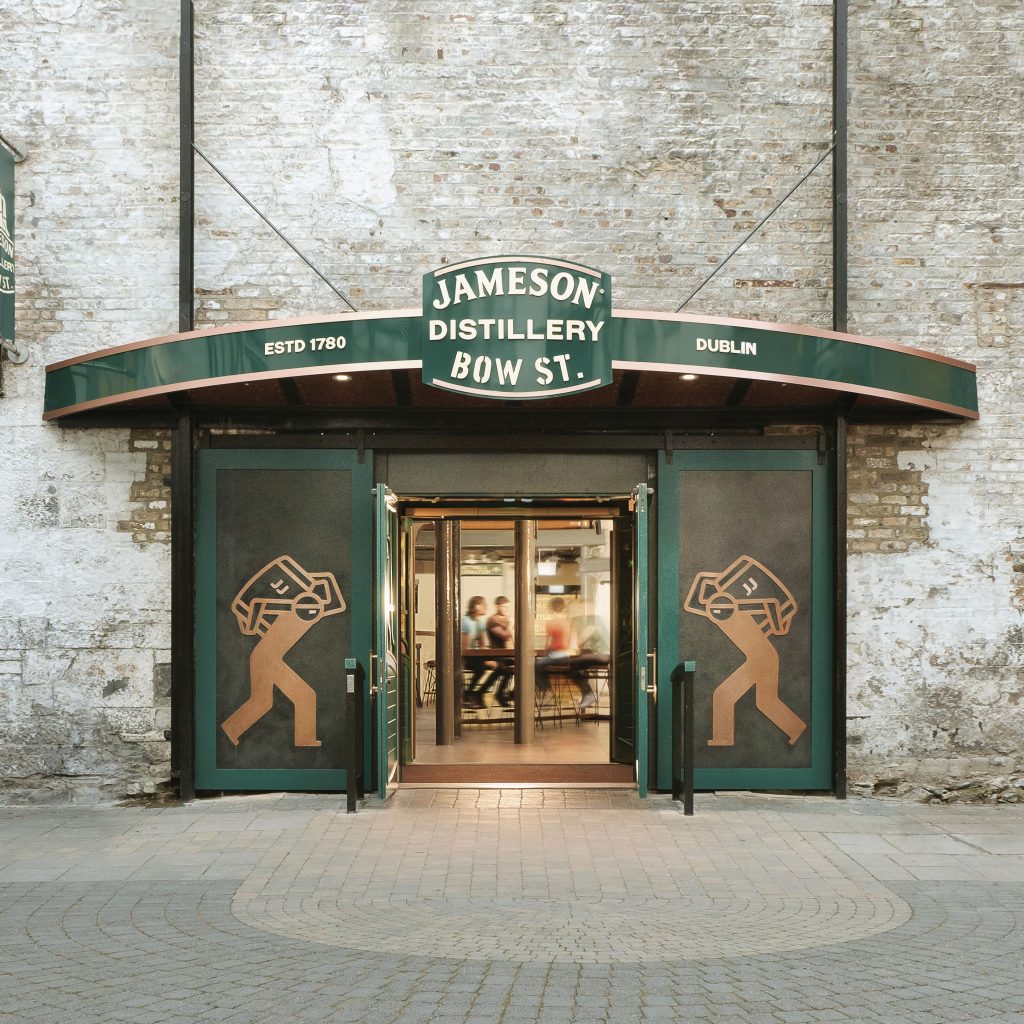I’m not a beer drinker.
When I went to Ireland, I was the elderflower-gin-and-tonic-served-in-a-fishbowl in pubs overflowing with Guinness pints.
But I do love a good whiskey, so when I found myself in Dublin, it was an easy pick between visiting the famous Guinness Storehouse or the legendary Jameson Whiskey Distillery on Bow St.—the two are a mere 20-minute walk apart, for those looking to do both.
The birthplace of the brand itself, Dublin’s brush with Jameson began in 1780, when Scottish businessman, John Jameson, opened a distillery. For more than two centuries, the triple distilled Irish whiskey has been made using the same refined process—malted and unmalted barley grown in Ireland is blended with water fresh from the nearby Dungourney river. From there, in order to be truly classified as Irish whiskey, the liquor must age in wooden barrels for a minimum of three years on the island.
Since the very first batch was made 244 years ago, Jameson has crafted a series of blends, from its aged variations, like the Jameson 18 Year Old, to its Vintage Reserve collection, which can sell for into the hundreds. The iconic green bottle is exported to more than 130 countries and every year, thousands of Jameson fans travel from all over the world to see where it all began.

From tours to premium whiskey tastings, cocktail classes to deep dive blending experiences, the Jameson Distillery at Bow St. engages guests through multiple offerings—different experience journeys, all fully hosted by knowledgeable brand storytellers. Now a visitor’s centre and museum, whiskey production ceased at the Bow St. location in 1970 and in 1975, moved to the Midleton Distillery in County Cork, Ireland, where it is produced to this day.
Tours typically run for 40 minutes and include a drink on the house at the Distillery’s sprawling bar. Inside a private tasting room, I was met with three empty Glencairn glasses and an eyedropper. Shortly after, a Jameson ambassador informed me that I’d be tasting three blends: Jameson Original, the Jameson Crested, and the Jameson Black Barrel—in that order.
Much like wine tasting, there’s a bit of an artform to sampling whiskey—first, give it a good sniff.
Next, the ambassador told me to swirl the glass and examine the writer’s tears. A confused writer myself, I scanned the room, trying to see who was sobbing into their sample. But as it turns out, just like wine droplets on the inside of a glass are called “legs”, whiskey droplets are called “writer’s tears”, because as the saying goes, many great Irish writers enjoyed the drink while pining over their pages back in the day.

“We’re a little poetic in Ireland,” said John Carroll, marketing manager, Jameson Distillery Bow St. Dublin. “While it’s not set-in-stone nor an exact science, generally thin, fast-moving tears suggest a light-bodied whiskey, and thicker, slow-moving tears suggest an oilier and more full-bodied whiskey, with a higher Alcohol by Volume (ABV).” For reference and comparison, Jameson Original is a medium bodied whiskey, because it’s a blend of pot still and column still spirit.
For many, Jameson Original is an introductory drink into the wild world of whiskey. It’s floral, very smooth and packs notes of sweet cherry and a hint of vanilla, which makes for relatively easy drinking.
“They say to study the classics is to understand how we got to where we are,” said Carroll, explaining our starting choice.
Next, we nose and taste the Jameson Crested. “This one is a tribute to the first drops bottled from Bow Street back in 1963,” Carroll said. “Prior to this, we sold casks directly to licensed ‘bonders’ who bottled and sold the whiskey themselves. The Crested blend uses a greater proportion of Sherry cask whiskey, giving it much more in the way of sherry cask influence.” This one, which picks up notes of toffee and malt, isn’t currently available for purchase in Canada, making the experience extra exclusive.
Finally, I tasted the elusive Jameson Black Barrel, which Carroll says is one of the most complex whiskeys produced by the Distillery, and one which is currently enjoying tremendous popularity around the world. This one smelled almost like a cereal, and tasted a bit spicier (but still held its sweet notes) than the first two.
“What makes this whiskey unique is the enhanced contribution of double-charred ex-Bourbon casks; this elevates the oak influence and magnifies the sweetness,” he said.
As for the eyedropper, Carroll said adding water is a personal preference—by adding a few drops it will slightly bring down the strength, opening up the whiskey and allowing more compounds to be released – particularly esters and fruity compounds, which are trapped within the alcohol.

